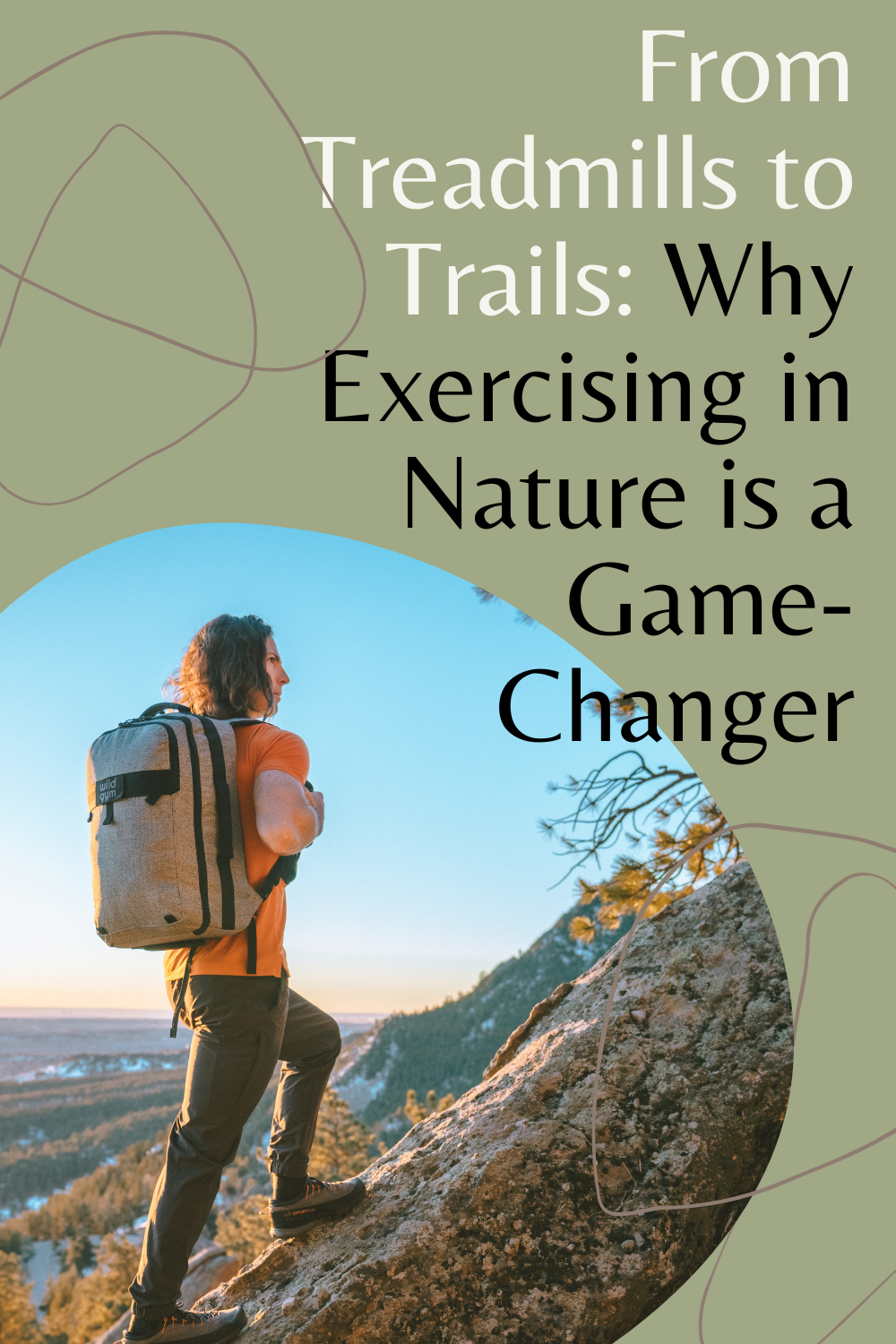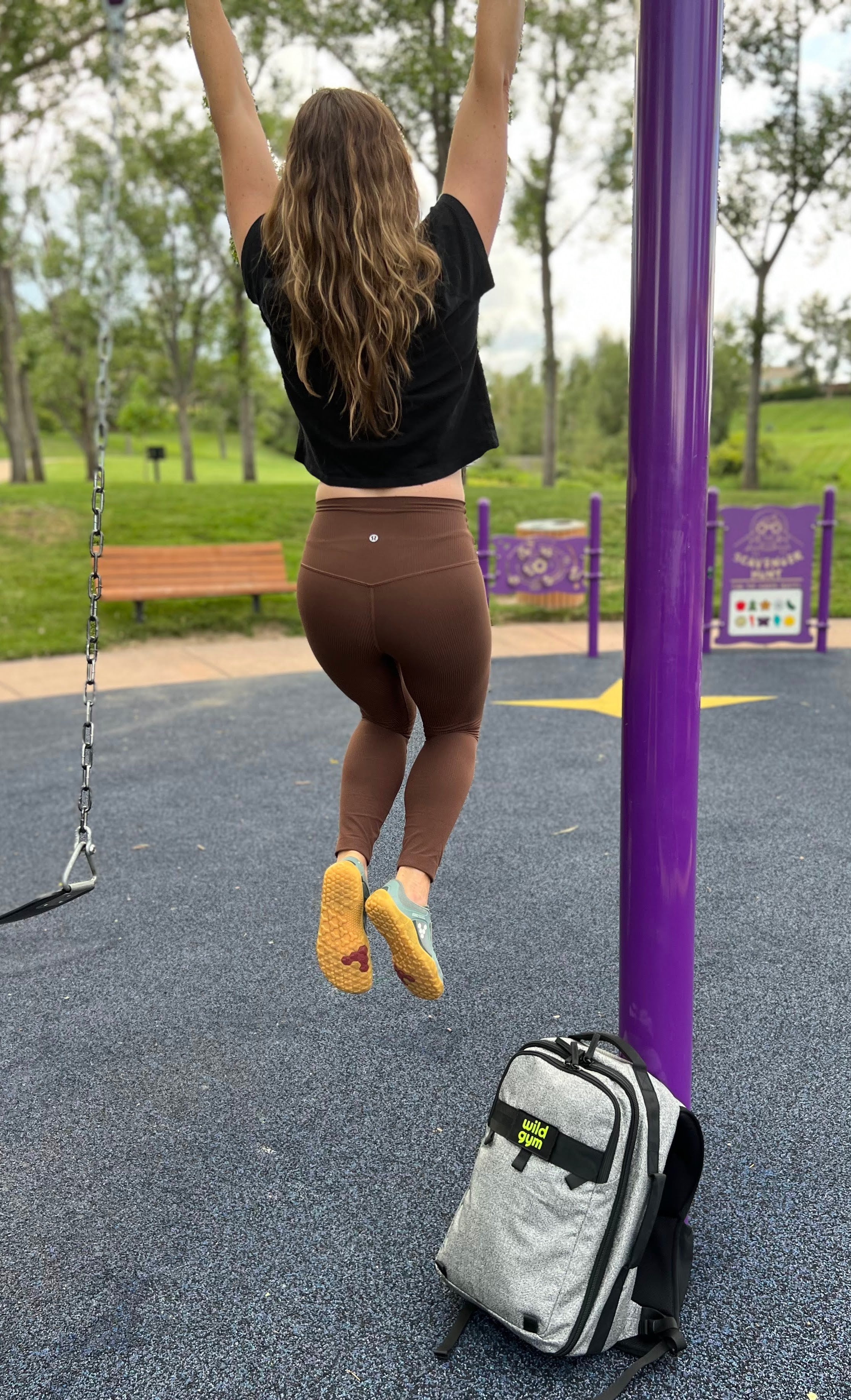Happy Friday, League of Wildness!
As we approach the start of the first-ever Wild Day Challenge, we hope you are ready for 21 days of reaping the benefits of spending more time outdoors! Thanks to those who are already signed up! If you haven't yet, there is a link at the bottom of this email. On that note, make sure you whitelist our wildgym.com domain!
With summer knocking on the door and the Wild Day Challenge imminent, it seemed like a good time to dive into the benefits of taking workouts into the wild outdoors along with some ways you can use nature features to enhance your daily movement.
The Immediate Benefits
We all know that time in the sun increases our vitamin D levels. Low levels of vitamin D are associated with many issues, including depression, immune dysfunction, decreased bone density, and even cardiovascular trouble.
Aside from vitamin D, there are many other benefits to spending more time outdoors. Being in the fresh air is an immediate mood lifter. Our minds engage with the complexities of the natural world, enabling us to let go of stress. Spending just 20 minutes outdoors has been shown to decrease cortisol levels and provide some symptom relief for anxiety and depressive disorders.
One of the most fascinating benefits is enhanced immune protection. Being outdoors exposes our bodies to microbes which help to “train” our immune systems. But it also increases the activity of our killer T-cells as well as anti-cancer proteins. Studies show that exposure to forests specifically increases these benefits.
The Many Ways of Utilizing Nature
Because we spend so much time indoors it’s not always apparent what we should be doing when we go outside. Simply taking a walk offers many benefits if you get onto trails or grass instead of sidewalks. If you want to take it further, there are myriad ways to use natural features to enhance your outdoor workouts.
Using terrain
Once you step off of man-made surfaces, the terrain under your feet shifts and changes constantly. You’ll likely notice that if you hike 5 miles it’s more work than walking 5 miles on treadmill. That is due to a combination of factors, including constant changes inclines and declines and uneven surfaces full of rocks, sticks, bumps, and holes. Walking on such surfaces forces your body to do more work to stabilize itself. Every step is different, and your body makes micro adjustments with each one. It is especially beneficial if you are barefoot or wear minimalist shoes with ample ground feel.
If you have ever walked miles on a beach or ran in wet snow, you’ve likely noticed it’s a lot more challenging. Nothing like the start of summer to get our bare feet into some sand!
Our minds engage differently when they have to focus on changing terrain and obstacles. There is less room for worrying about what’s for dinner or stressing about a work project. It’s just you and nature, as it should be. No matter how fancy gym equipment gets, it will never replicate the experience of being in the natural world.
Using tree
Climbing trees is a great activity, but there are other ways to utilize them as well. You can use trees to stretch your shoulders or calves or throw in a Tarzan pull-up. If you aren’t ready for pull-ups yet, hang from a branch once in a while, it’s a great decompression stretch for the back. Don’t forget to keep your eye out for places to set up your pocket monkii 2!
Using rocks
You’ve probably seen some of the videos of Wildman Dan using rocks to do various strength moves. For starters, you can use them for curls, presses, or squats. I find them more challenging than dumbbells, even if the actual weight might be very similar. I suspect it is a combination of both standing on uneven surfaces and lifting uneven weight which engages stabilizer muscles.
You can also use rocks for balance practice. No need to run out and buy a bosu ball, just spend some time hopping up across a section of rocks! Instead of always walking around them, consider how you can use them to your benefit. Get in some step-ups at varying heights. Vault up onto rock ledges. Throw in some split lunges or use the edge of a larger rock for calf raises to get a more significant heel drop.
Using darkness
This is a sensory experience that completely changes how you feel within your body. Most of the time, our eyes find something to focus on. When I am doing my workouts indoors, it might be a poster on the wall, for example. Without realizing it, this shifts the focus to an external stimulus rather than what our body is doing. Instead, close your eyes, then do a few reps and see if you feel a difference. Your attention now has to shift inward to see what other senses the body can use to control its movement within the space. You will likely notice more nuances in your movements and be more attentive to deviations in form.
You can take that idea outdoors and spend some time in low-light or even dark conditions! A walk in the woods just after sunset is a completely different experience. The moon and stars add just enough brightness to navigate, but not without extra input from your non-sight senses. It’s probably a good idea to carry a headlamp, just in case.
Using weather
Like anyone else, I love a perfect day, 70 and sunny! Just don’t make the mistake of assuming those are the only days worth getting outside for. Most of us live and work in buildings that are perfectly climate-controlled. The temperature is consistent all day and all night, and we often control the humidity and airflow as well. If we only go outside on perfect days (that mostly match our indoor experience) we lose a lot of opportunities to challenge our bodies in new ways.
Spend time outdoors in different conditions. Go for a hike in the rain! It’s a fantastic experience. Most people stay home, so you can find yourself in some amazing spots with no one else around. Everything will sound and look different. The sound of rain on leaves is incredibly relaxing.
Try running into the wind or allowing a crosswind to force you to stabilize your body in different ways.
Foraging
This is one of my favorite methods of applied wildness, and I spend time a lot of time foraging for mushrooms, plants, fruits, and nuts. I used to spend hours picking blueberries only to go home with a sore back. The sore back went away when I became mindful of my movements and treated foraging like a workout. Picking blueberries for 8 hours requires a lot of deep squatting on varying surfaces. It’s a great workout plus you get the best trail snacks available!
Do yourself a favor and look into what foraging opportunities exist around you. Make sure you check regulations for public land or get permission from a landowner. Please make sure you are properly identifying anything you might eat. I encourage you to enlist the help of a local until you gain confidence in your skills. You do not want to confuse jack-o-lantern mushrooms with chanterelle mushrooms. One is delicious sauteed in butter. The other is poisonous. Know with 100% certainty what you are eating, or don’t eat it!
Get out there!
Nature requires us to adjust constantly to its changing terrain and conditions. As a result, we move our bodies more efficiently. The more variety the better, and nature is the queen when it comes to providing ample opportunity for that variety! There is no downside, you will enjoy falling cortisol levels and the release of the stranglehold of stress. Your mood will lift and your breathing will deepen. The angels will sing down from the heavens. Ok, maybe not, but you’ll probably feel like they are! Wherever you are, set down the screen and get into the wild outdoors. Go for a walk around your yard. Bonus points if you go barefoot. Seriously, go!
Resources for those who like to nerd out about science as I do:
Mental health benefits: less anxiety and depression, including in people who were already experiencing those issues
https://www.sciencedirect.com/
Time in nature may contribute to a strong immune system beyond vitamin D. Time in forested areas increases killer immune cells and anti-cancer proteins
https://pubmed.ncbi.nlm.nih.
https://pubmed.ncbi.nlm.nih.
20 minutes in nature can reduce cortisol levels
https://neurosciencenews.com/
Make it a wild weekend!
-Kim



Leave a comment
This site is protected by hCaptcha and the hCaptcha Privacy Policy and Terms of Service apply.